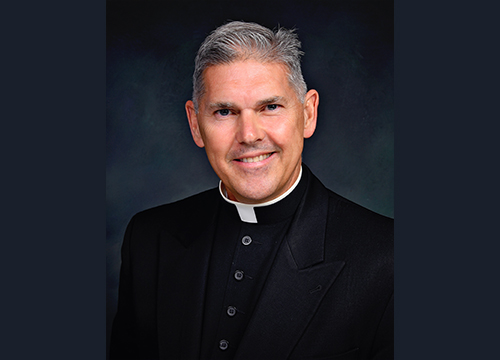Thirty-Second Sunday in Ordinary Time – Year B 1 Kgs 17:10-16; Ps 146:7, 8-9, 9-10; Heb 9:24-28; Mk 12:38-44
As Americans, we can have expectations of others that might be summarized by the phrase, “What have you done for me lately?” We see it particularly in our political life.
We get into spiritual danger when we start transferring that attitude to our relationship with God. If our hearts have grown cold toward God or in our expression of our worship in the Church, could this attitude be at the bottom of why we have become lukewarm in our faith?
We have each experienced the Lord’s faithfulness to us in the events of our lives. We might not be feeling it right now, but each of us, if we are honest, can see how God has sustained us throughout our earthly journey.
Psalm 146 has a beautiful vision of the Lord’s faithfulness: “The Lord keeps faith forever, . . . The Lord gives sight to the blind; . . . The fatherless and the widow he sustains.”
Yet the cry can also go up: When, O Lord, will this vision be fulfilled? It seems a vision that is only fulfilled in fits and starts. It seems only a reality in anticipation in the mission of Jesus during his earthly pilgrimage. But when will it be complete and finally triumph?
It is too easy to say it will all be fulfilled when we get to heaven. That is exactly the critique of Karl Marx – that religion is the opiate of the people. It puts off the fulfillment of the vision to some undefined point in a hazy future paradise.
But that is not the vision of the Psalm 146, and it is not the message of the Gospel of Jesus Christ. That future has definitively begun now for us and for the world in the person of Jesus Christ, the High Priest.
Our second reading from the Letter to the Hebrews uses the image of the Temple and Jesus as the high priest to tell us of Jesus’ final victory over sin and death. The Temple was at least four things: (1) the dwelling-place of God on earth; (2) a microcosm of heaven and earth; (3) the sole place of sacrificial worship; (4) the place of the sacrificial priesthood.
Jesus saw all four aspects of the Temple as being fulfilled in himself and his disciples. Temple worship was not just a means of worshipping God; it was one of the ways that the people of Israel believed that God used to sustain the world.
Oppression, sin, disease, death and human wickedness are powers of chaos that unmake the world. But they have all been definitively overturned by the sacrifice of the sinless Christ, who is at the same time the Temple, the High Priest and the sacrifice itself. So even though the victory over those things is still being worked out, it is really a mop-up operation because the war is over.
If we are tempted to lose heart, Christ reminds us that we are participating in that final victory as we live out the law of God, as we participate in works of mercy and charity, and as we offer our worship through our participation in the definitive sacrifice of Christ at the Mass.
God’s salvific action is not simply in the past or some distant future; it is being realized right now.
Msgr. Timothy Keeney is pastor of Incarnation, Charlottesville.

